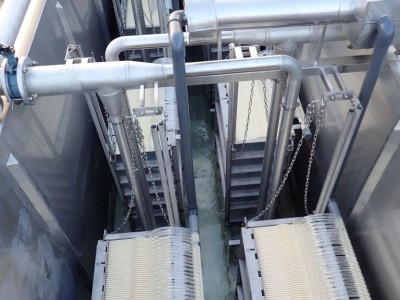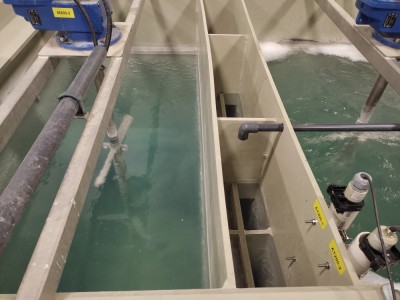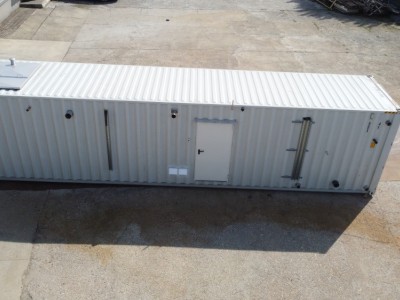Membrane processes used for wastewater and water treatment.

Ultrafiltration is a membrane process used to purify water by passing it through semipermeable membranes that block particulate matter, bacteria, and viruses. These membranes can come in a variety of shapes, such as flat-sheet and hollow-fiber. Depending on the material they are made of, the membranes can be made of polyvinylidene fluoride (PVDF) or silicon carbide (SiC). The filtration method of the membranes can be from inside to outside (inside-out) or from outside to inside (outside-in). Ultrafiltration modes can be vacuum-driven, where water is drawn through the membranes, or pressure-driven, where water is pushed through the membranes under pressure. In both modes, the membranes retain contaminants, allowing only clean water to pass through. Due to its high efficiency in removing contaminants, ultrafiltration is widely used in the treatment of drinking water, wastewater, and industrial processes.
pH correction in flow or batch mode

Ensuring the appropriate pH value in sewage is very important for two reasons. Firstly, each receiver (sewage system, environment) requires that the sewage directed to it has a pH within a predetermined range. Secondly, the sewage pretreatment and purification processes themselves require ensuring their appropriate pH. Emi offers a wide range of solutions, from simple systems with one measurement and dosing of one neutralizing agent to complex, multi-stage systems requiring the use of specific neutralizing agents. pH correction can take place at many levels, stages and in one of two modes: flow (online) or batch.
EMI offers specialized containers with built-in equipment for the implementation of any industrial wastewater treatment processes.

EMI has developed modular container systems in a marine version and designed to be connected into larger systems. The containers we offer have been designed from the ground up to operate in the harsh conditions of industrial sewage treatment plants. The interiors are lined with 100% stainless steel, have heating, ventilation, health and safety devices and individually configured technological equipment. The use of container construction allows for the shortest possible project implementation time. The entire installation is prefabricated in the EMI production plant and is delivered ready for start-up immediately after connection on site (in some cases preparatory works are required, such as tanks and underground networks, ground hardening, etc.). EMI's offer also includes tanks in containers that can perform averaging, storage and even become biological reactors.